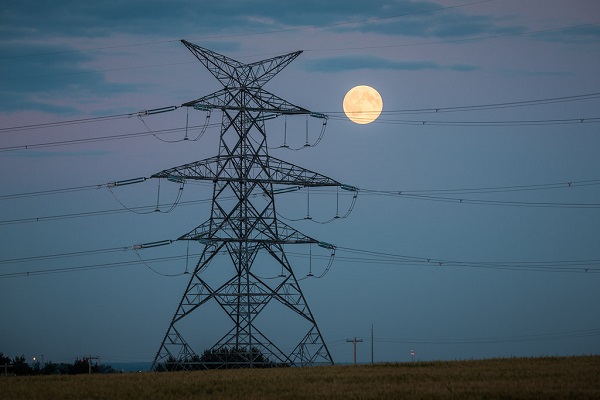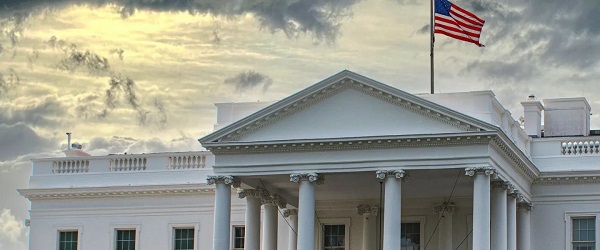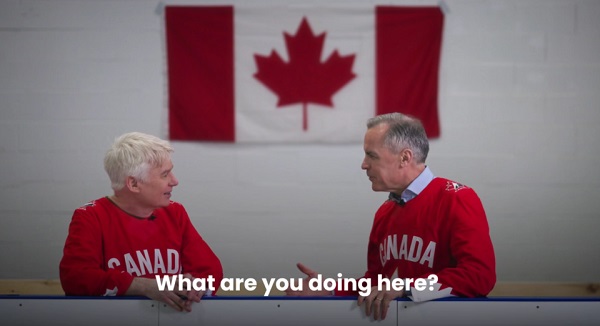Business
Feds move target for net-zero grid back 15 years. Western provinces say it’s not of their business

From Resource Works
“These latest measures fail to recognize provinces have jurisdiction over the development and management of electricity. The federal regulations are duplicative, inefficient, and add to costs.”
The federal government has clarified its clean-energy goal for a net-zero power grid.
Its final Clean Electricity Regulations target a net-zero grid across the country by 2050. But didn’t Ottawa previously, in August 2023, set a goal of 2035?
Certainly, one leading environmental group declared: “The federal government has committed to achieving zero-emissions electricity by 2035.”
And a law firm that analyses energy matters told followers in August 2023: “Government of Canada releases draft Clean Electricity Regulations aimed at achieving net-zero emissions from Canada’s electricity grid by 2035.”
What Ottawa said in August 2023 was this: “The proposed regulations would set performance standards that would ensure that the sector achieves significant transformation by 2035, so that a robust foundation of clean electricity is available to power the electric technologies (e.g., electric transportation) needed to support Canada’s transition to a net-zero GHG emissions economy by 2050.”
Announcing that 2035 goal was a case of fuzzy wording, according to Energy Minister Jonathan Wilkinson. He said Ottawa could have been more precise in its language and context around what exactly the 2035 target referred to.
He now says: “2035 was really having a plan as to how you were going to reduce emissions to be able to get to a net-zero economy by 2050… Perhaps we were not as precise with our language as we should have been.”
Environment Minister Steven Guilbeault issued an update in February 2024: “All G7 countries, including Canada and the United States, have committed to transitioning to a net-zero electricity grid as a foundational measure to help achieve low-carbon economies by 2050.”
And he now says: “We knew from the get-go, from where we are to where we need to be, we couldn’t get there in 10 years… It was always our intention that we want to see things happening before 2035. But that we wouldn’t be able to get to a decarbonized grid before 2050.”
Whatever they said, meant, clarified, updated, and/or corrected, the new regulations face opposition and a court challenge from Alberta, for one.
Premier Danielle Smith criticized the latest regulations as unconstitutional, arguing they seek to regulate an area of provincial jurisdiction.
“After years of watching the federal government gaslight Canadians about the feasibility of achieving a net-zero power grid by 2030, we are gratified to see Ottawa finally admit that the Government of Alberta’s plan to achieve a carbon-neutral power grid by 2050 is a more responsible, affordable, and realistic target.
“That said, the federal government’s finalized electricity regulations remain entirely unconstitutional as they seek to regulate in an area of exclusive provincial jurisdiction. They also require generators to meet unreasonable and unattainable federally mandated interim targets beginning in 2035, which will still make electricity unaffordable for Canadian families.
“Alberta will therefore be preparing an immediate court challenge of these electricity regulations.”
Saskatchewan’s government said in a news release that it will simply not comply with the new regulations.
“Our government unequivocally rejects federal intrusion into our exclusive provincial jurisdiction over the electricity system.
“Saskatchewan will prioritize maintaining an affordable and reliable electricity grid to support our regional needs and growth. The federal Clean Electricity Regulations are unconstitutional, unaffordable, unachievable, and Saskatchewan cannot, and will not, comply with them.”
The Business Council of BC slammed the new federal regulations on multiple grounds: constitutionality, jeopardizing the reliability of electricity delivery, higher costs for businesses and households, limiting investment, regional inequities, technological limitations, and risks to greenhouse-gas management.
“These latest measures fail to recognize provinces have jurisdiction over the development and management of electricity. The federal regulations are duplicative, inefficient, and add to costs.”
And: “It is important to recognize that Canada’s combined electricity systems are already 84% non-emitting, and that electricity represents less than 10% of Canada’s total emissions. The sector has made more progress in reducing emissions than any other sector in the country over the past two decades.
“We urge the government to set aside these new regulations and work collaboratively with the electricity sector to develop a more balanced approach that respects provincial roles and will not risk undermining investment and driving up costs. The path to a cleaner energy system requires cooperation, not regulation.”
The latest announcement from Ottawa includes these statements:
- “Federal analyses find that the Regulations have no impact on electricity rates for the vast majority of Canadians, and in some cases, will even have a slightly positive impact on rates. Independent third-party expert modelling substantiates federal analysis that the Regulations are feasible.
- “To ensure rates are affordable for Canadian families over the coming decade, the federal government is investing $60 billion to support the electricity sector.
- “The adoption of efficient electric appliances, vehicles, and heat pumps presents an enormous opportunity for families to save money on their energy bills.
- “In the shift to clean electricity, 84% of households are expected to spend less on their monthly energy costs, when accounting for the over $60 billion in federal clean electricity incentives. This could lead to $15 billion in total energy-related savings for Canadians by 2035.”
All subject to clarification, updating, and/or correction—and Alberta’s promised court case.
Business
US Supreme Court may end ‘emergency’ tariffs, but that won’t stop the President

From the Fraser Institute
By Scott Lincicome
The U.S. Supreme Court will soon decide the fate of the global tariffs President Donald J. Trump has imposed under the International Emergency Powers Act (IEEPA). A court decision invalidating the tariffs is widely expected—hovering around 75 per cent on various betting markets—and would be welcome news for American importers, the United States economy and the rule of law. Even without IEEPA, however, other U.S. laws all but ensure that much higher tariffs will remain the norm. Realizing that protection will just take a little longer and, perhaps, be a little more predictable.
As my Cato Institute colleague Clark Packard and I wrote last year, the Constitution grants Congress the power to impose tariffs, but the legislative branch during the 20th century delegated much of that authority to the president under the assumption that he would be the least likely to abuse it. Thus, U.S. trade law is today littered with provisions granting the president broad powers to impose tariffs for various reasons. No IEEPA needed.
This includes laws that Trump has already invoked. Today, for example, we have “Section 301” tariffs of up to 25 per cent on around half of all Chinese imports, due to alleged “unfair trade” practices by Beijing. We also have global “Section 232” tariffs of up to 50 per cent on imports of steel and aluminum, automotive goods, heavy-duty trucks, copper and wood products—each imposed on the grounds that these goods threaten U.S. national security. The Trump administration also has created a process whereby “derivative” products made from goods subject to Section 232 tariffs will be covered by those same tariffs. Several other Section 232 investigations—on semiconductors, pharmaceuticals, critical minerals, commercial aircraft, and more—were also initiated earlier this year, setting the stage for more U.S. tariffs in the weeks ahead.
Trump administration officials admit that they’ve been studying these and other laws as fallback options if the Supreme Court invalidates the IEEPA tariffs. Their toolkit reportedly includes completing the actions above, initiating new investigations under Section 301 (targeting specific countries) and Section 232 (targeting certain products), and imposing tariffs under other laws that have not yet been invoked. Most notably, there’s strong administration interest in Section 122 of the Trade Act of 1974, which empowers the president to address “large and serious” balance-of-payments deficits via global tariffs of up to 15 per cent for no more than 150 days (after which Congress must act to continue the tariffs). The administration might also consider Section 338 of the Tariff Act of 1930—a short and ambiguous law that authorizes the president to impose tariffs of up to 50 per cent on imports from countries that have “discriminated” against U.S. commerce—but this is riskier because the law may have been superseded by Section 301.
We should expect the administration to move quickly to use these measures to reverse engineer Trump’s global tariff regime under IEEPA. The main difference would be in how he does so. IEEPA was essentially a tariff switch in the Oval Office that could be flipped on and off instantly, creating massive uncertainty for businesses, foreign governments and the U.S. economy. The alternative authorities, by contrast, all have substantive and procedural guardrails that limit their size and scope, or, at the very least, give American and foreign companies time to prepare for forthcoming tariffs (or lobby against them).
Section 301, for example, requires an investigation of a foreign country’s trade and economic policies—cases that typically take nine months and involve public hearings and formal findings. Section 232 requires an investigation into and a report on whether imports threaten national security—actions that also typically take months. Section 122 has fewer procedures, but its limited duration and 15 per cent cap make it far less dangerous than IEEPA, under which Trump has repeatedly threatened tariffs of 100 per cent or more.
Of course, “procedural guardrails” is a relative term for an administration that has already stretched Section 232’s “national security” rationale to cover bathroom vanities. The courts also have largely rubber-stamped the administration’s previous moves under Section 232 and Section 301—a big reason why we should expect the Trump administration’s tariff “Plan B” to feature them.
Thus, a court ruling against the IEEPA tariffs would be an important victory for constitutional governance and would eliminate the most destabilizing element of Trump’s tariff regime. But until the U.S. Congress reclaims some of its constitutional authority over U.S. trade policy, high and costly tariffs will remain.
Business
Budget 2025: Ottawa Fakes a Pivot and Still Spends Like Trudeau

It finally happened. Canada received a federal budget earlier this month, after more than a year without one. It’s far from a budget that’s great. It’s far from what many expected and distant from what the country needs. But it still passed.
With the budget vote drama now behind us, there may be space for some general observations beyond the details of the concerning deficits and debt. What kind of budget did Canada get?
Haultain’s Substack is a reader-supported publication.
To receive new posts and support our work, please consider becoming a free or paid subscriber.
Try it out.
For a government that built its political identity on social-program expansion and moralized spending, Budget 2025 arrives wearing borrowed clothing. It speaks in the language of productivity, infrastructure, and capital formation, the diction of grown-up economics, yet keeps the full spending reflex of the Trudeau era. The result feels like a cabinet trying to change its fiscal costume without changing the character inside it. Time will tell, to be fair, but it feels like more rhetoric, and we have seen this same rhetoric before lead to nothing. So, I remain skeptical of what they say and how they say it.
The government insists it has found a new path, one where public investment leads private growth. That sounds bold. However, it is more a rebranding than a reform. It is a shift in vocabulary, not in discipline.
A comparison with past eras makes this clear.
Jean Chrétien and Paul Martin did not flirt with restraint; they executed it. Their budgets were cut deeply, restored credibility, and revived Canada’s fiscal health when it was most needed. The Chrétien years were unsentimental. Political capital was spent so financial capital could return. Ottawa shrank so the country could grow. Budget 2025 tries to invoke their spirit but not their actions. Nothing in this plan resembles the structural surgery of the mid 1990s.
Stephen Harper, by contrast, treated balanced budgets as policy and principle. Even during the global financial crisis, his government used stimulus as a bridge, not a way of life. It cut taxes widely and consistently, limited public service growth, and placed the long-term burden on restraint rather than rhetoric. Budget 2025 nods toward Harper’s focus on productivity and capital assets, yet it rejects the tax relief and spending controls that made his budgets coherent.
Then there is Justin Trudeau, the high tide of redistribution, vacuous identity politics, and deficit-as-virtue posturing. Ottawa expanded into an ideological planner for everything, including housing, climate, childcare, inclusion portfolios, and every new identity category. Much of that ideological scaffolding consisted of mere words, weakening the principle of equality under the law and encouraging the government to referee culture rather than administer policy.
Budget 2025 is the first hint of retreat from that style. The identity program fireworks are dimmer, though they have not disappeared. The social policy boosterism is quieter. Perhaps fiscal gravity has begun to whisper in the prime minister’s ear.
However, one cannot confuse tone for transformation.
Spending is still vast. Deficits grew. The new fiscal anchor, balancing only the operating budget, is weaker than the one it replaced. The budget relies on the hopeful assumption that Ottawa’s capital spending will attract private investment on a scale that economists politely describe as ambitious.
The housing file illustrates the contradiction. The budget announces new funding for the construction of purpose-built rentals and a larger federal role in modular and subsidized housing builds. These are presented as productivity measures, yet they continue the Trudeau-era instinct to centralize housing policy rather than fix the levers that matter. Permitting delays, zoning rigidity, municipal approvals, and labour shortages continue to slow actual construction. Ottawa spends, but the foundations still cure at the same pace.
Defence spending tells the same story. Budget 2025 offers incremental funding and some procurement gestures, but it avoids the core problem: Canada’s procurement system is broken. Delays stretch across decades. Projects become obsolete before contracts are signed. The system cannot buy a ship, an aircraft, or an armoured vehicle without cost overruns and missed timelines. Spending more through this machinery will waste time and money. It adds motion, not capability.
Most importantly, the structural problems remain untouched: no regulatory reform for major projects, no tax competitiveness agenda, no strategy for shrinking a federal bureaucracy that has grown faster than the economy it governs. Ottawa presides over a low-productivity country but insists that a new accounting framework will solve what decades of overregulation and policy clutter have created. More bluster.
To receive new posts and support our work, please consider becoming a free or paid subscriber.
From an Alberta vantage, the pivot is welcome but inadequate. The economy that pays for Confederation, energy, mining, agriculture, and transportation receives more rhetorical respect in Budget 2025, yet the same regulatory thicket that blocks pipelines and mines remains intact. The government praises capital formation but still undermines the key sectors that generate it.
Budget 2025 tries to walk like Chrétien and talk like Harper while spending like Trudeau. That is not a transformation; it is a costume change. The country needed a budget that prioritized growth rooted in tangible assets and real productivity. What it got instead is a rhetorical turn without the courage to cut, streamline, or reform.
Canada does not require a new budgeting vocabulary. It requires a government willing to govern in the best interest of the country.
Haultain’s Substack is a reader-supported publication.
Help us bring you more quality research and commentary.
-

 Carbon Tax2 days ago
Carbon Tax2 days agoCarney fails to undo Trudeau’s devastating energy policies
-

 Business2 days ago
Business2 days agoBudget 2025: Ottawa Fakes a Pivot and Still Spends Like Trudeau
-

 Health2 days ago
Health2 days agoTens of thousands are dying on waiting lists following decades of media reluctance to debate healthcare
-

 Opinion1 day ago
Opinion1 day agoLandmark 2025 Study Says Near-Death Experiences Can’t Be Explained Away
-

 International11 hours ago
International11 hours ago“The Largest Funder of Al-Shabaab Is the Minnesota Taxpayer”
-

 Focal Points1 day ago
Focal Points1 day agoSTUDY: TikTok, Instagram, and YouTube Shorts Induce Measurable “Brain Rot”
-

 Bruce Dowbiggin17 hours ago
Bruce Dowbiggin17 hours agoElbows Down For The Not-So-Magnificent Seven: Canada’s Wilting NHL Septet
-

 Censorship Industrial Complex14 hours ago
Censorship Industrial Complex14 hours agoUK Government “Resist” Program Monitors Citizens’ Online Posts










